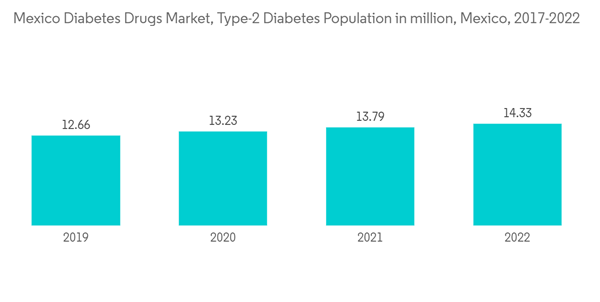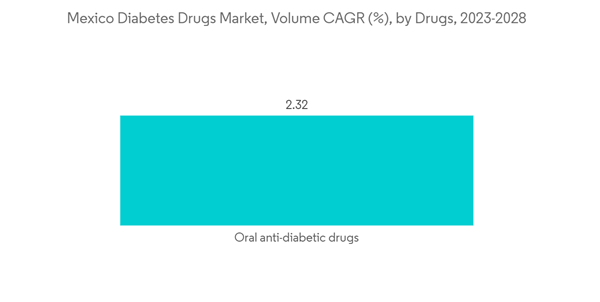Within the first year since its inception, the COVID-19 pandemic has been responsible for premature deaths, particularly among older individuals. Most people who have died of COVID-19 were affected by the co-occurrence of two or more chronic conditions in the same individual. Several studies have confirmed that chronic diseases like diabetes are associated with adverse outcomes in COVID-19 patients.
People with diabetes have more chances to get into serious complications rather than normal people. The manufacturers of diabetes drugs have taken care during COVID-19 to deliver the medications to diabetes patients with the help of local governments.
Diabetic drugs are medicines developed to stabilize and control blood glucose levels amongst people with diabetes. Diabetic drugs have been potential candidates for treating diabetic patients affected by SARS-CoV-2 infection during the COVID-19 pandemic. The prevalence of diabetes in people hospitalized with COVID-19 infection and the recognition that improved glycemic control might improve outcomes and reduce the length of stay in patients with COVID-19 have underlined the importance of diabetes care drugs.
According to IDF Diabetes Atlas 2021, the prevalence of diabetes in Mexico has now reached 16.9% or one in six adults. In 2021, an estimated 14 million adults in Mexico are living with diabetes - a rise of 10% in the past two years. Additionally, 11 million adults in the country have Impaired Glucose tolerance (IGT), which places them at high risk of developing type 2 diabetes. Diabetes-related health expenditure in Mexico has reached USD 20 billion, putting it in the top ten countries or territories with the highest total health expenditure. Under half (47.5%) of people living with diabetes in the country are undiagnosed.
When diabetes is undetected or inadequately treated, people with diabetes are at risk of serious and life-threatening complications, such as heart attack, stroke, kidney failure, blindness, and lower-limb amputation. These result in reduced quality of life and higher healthcare costs and lead to a greater need for access to care. In Mexico, diabetes, especially Type 2, became a healthcare burden as it is the primary cause of death among women and the secondary cause of death among men. Obesity, sedentarism, bad eating habits, genetics, family background, and age are among the factors that lead to developing diabetes. Therefore, owing to the aforementioned factors the studied market is anticipated to witness growth over the analysis period.
Mexico Diabetes Drugs Market Trends
The oral anti-diabetic drugs segment holds the highest market share in the Mexico Diabetes Drugs Market in the current year
The oral anti-diabetic drugs segment holds the highest market share of about 79.4% in the Mexico Diabetes Drugs Market in the current year.Mexico witnessed an alarming increase in the prevalence of diabetes in recent years. Patients with diabetes require many corrections throughout the day to maintain nominal blood glucose levels, such as oral anti-diabetic medication or ingestion of additional carbohydrates by monitoring their blood glucose levels. The rate of newly diagnosed Type 1 and Type 2 diabetes cases is seen to increase, mainly due to obesity, unhealthy diet, and physical inactivity. The rapidly increasing incidence and prevalence of diabetic patients and healthcare expenditure are indications of the increasing usage of diabetic drugs.
Oral Anti-Diabetic Drugs are available internationally and are recommended for use when escalation of treatment for type 2 diabetes is required along with lifestyle management. Oral agents are typically the first medications used in treating type 2 diabetes due to their wide range of efficacy, safety, and mechanisms of action. Anti-diabetic drugs help diabetes patients control their condition and lower the risk of diabetes complications. People with diabetes may need to take anti-diabetic drugs for their whole lives to control their blood glucose levels and avoid hypoglycemia and hyperglycemia. Oral anti-diabetic agents present the advantages of easier management and lower cost. So they became an attractive alternative to insulin with better acceptance, which enhances adherence to the treatment.
Lack of health insurance deprives people experiencing poverty of access to services and puts them at risk of financial hardship. To protect the people against excessive health expenditures, many countries like Mexico implemented community-based health insurance, national health insurance, and targeted public health insurance. Mexico includes multiple health insurance providers. The Instituto de Seguridad y Servicios Sociales de los Trabajadores del Estado [State Employee's Social Security and Social Services Institute, ISSSTE] provides coverage for government employees, and the Instituto Mexico del Seguro Social [Mexico Social Security Institute, IMSS] covers for private-sector employees. The Seguro Popular [People's Insurance] was launched to protect the working-age population against steep healthcare costs. Enrolment in the Seguro Popular is independent of health status or pre-existing illness. There is no co-payment under the type of health care received, and family contributions are determined solely by the ability to pay. The various initiatives by the Mexican government are expected to drive the market's growth.
Sodium-glucose cotransport -2 (SGLT-2) inhibitor Segment is Expected to register the highest CAGR in the Mexico Diabetes Drugs Market over the forecast period
Sodium-glucose cotransport -2 (SGLT-2) inhibitor segment is expected to register a CAGR of about 9.5% over the forecast period.SGLT-2 inhibitors, also called gliflozins, are a medicine class used to lower high blood glucose levels in people with type 2 diabetes. SGLT-2 inhibitors act independently of beta-cell function in the pancreas. SGLT-2 drugs significantly manage cardiovascular risk factors, including blood pressure, cardiac function, and antiinflammatory activity. SGLT-2 inhibitors are effective at lowering hemoglobin A1c levels and improving weight loss. They include a low risk of hypoglycemia and are usually well tolerated. Technological advancements increased over the period leading to several modifications in the SGLT-2 inhibitors or the formulations being developed.
Diabetes is a significant health problem and one of the extraordinary challenges for healthcare systems all over Mexico. The disease's growing incidence, prevalence, and progressive nature encouraged the development of new drugs to provide additional treatment options for diabetic patients. The roll-out of many new products, increasing international research collaborations in technology advancement, and increasing awareness about diabetes among people are some of the market opportunities for the players in the diabetes drugs market.
Pharmacies are considered an important tool for achieving better healthcare coverage in Mexico. The pharmaceutical industry includes integrated technology tools. Through the 'Beyond the Pills' initiative, companies complement their drug treatment with digital platforms to favor follow-up and ensure treatment continuity. Roche is one of the companies using the Beyond the Pills approach for treating diabetes. The pharmaceutical company includes a digital platform to manage diabetes called mu Sugr. Through it, Roche can offer accessible patient solutions within an open platform to respond to unmet needs. It aims to support people with diabetes to spend more time in their ideal glucose target range and improve their quality of life.
Owing to the factors above, the market will likely continue to grow.
Mexico Diabetes Drugs Industry Overview
The Mexico Diabetes Drugs Market is moderately consolidated, with major manufacturers, namely Eli Lilly, Sanofi, Novo Nordisk, AstraZeneca, and other generic players, holding a presence in the region. A major share of the market is held by manufacturers concomitant with strategy-based M&A operations and constantly entering the market to generate new revenue streams and boost existing ones.Additional Benefits:
- The market estimate (ME) sheet in Excel format
- 3 months of analyst support
This product will be delivered within 2 business days.
Table of Contents
Companies Mentioned (Partial List)
A selection of companies mentioned in this report includes, but is not limited to:
- Novo Nordisk A/S
- Takeda
- Pfizer
- Eli Lilly
- Janssen Pharmaceuticals
- Astellas
- Boehringer Ingelheim
- Merck and Co.
- AstraZeneca
- Bristol Myers Squibb
- Novartis
- Sanofi Aventis










